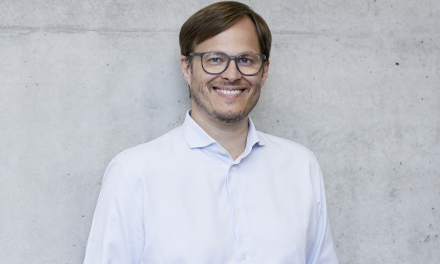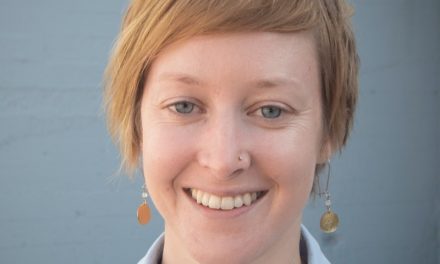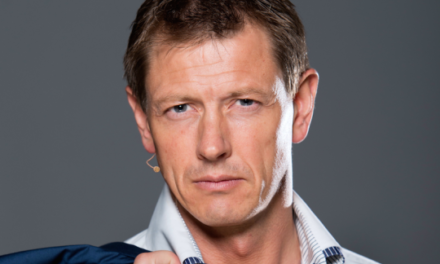Claire Lee, Physicist
on the ATLAS Experiment at CERN
What is your work at CERN about?
Claire Lee: My work is, basically, playing with the building blocks of the universe. In physics we want to figure out why the universe looks and behaves the way it does, that’s the goal of all science really, but it’s the goal of physics in particular. We have a theoretical model which describes the universe very well – the Standard Model of particle physics. It describes all the particles that make up all the stuff we see in the universe. The Higgs boson, the particle we discovered in 2012, was the last piece to complete the set of the Standard Model. The problem is that the Standard Model works for every experiment that we have done, but we know that it’s not complete: if we add up all of the “stuff” in the universe, it only totals to about five percent of that what is actually in the universe. The remaining 95% can be divided in two categories: dark matter and dark energy. One of the main goals for LHC physics over the next years is to try to see if we can shed some light on what this missing 95% actually is.
What is dark matter and dark energy?
Claire Lee: For dark matter we have a bit of an idea. Dark energy is more elusive, we are not really at the stage where we can start commenting on that yet. The problem is that the Standard Model doesn’t have anything to say about it at all. So we know that we have to extend this theoretical model but we don’t yet know how. We haven’t yet discovered any new particles that could be dark matter. If we do, we could study the properties of this matter, and that would tell us how to take our theory and move it along. Currently there are many different theoretical models that could explain what we see in the universe, but we don’t know which (if any) is correct. It’s as if we have made a puzzle and completed a small central part – which is our Standard Model – but the rest isn’t finished yet. We haven’t got the outer pieces yet, and those are what we are looking for.
How do you try to find the pieces of the puzzle?
Claire Lee: They are many different ways of studying it. What high energy experimentalists like to do is smash stuff together to see what happens. It’s somewhat like children playing, they like to break things to see what happens and then try to put the pieces together again to figure out how they work. What we do at CERN is to take protons, accelerate them really fast so they have lots of energy, and then smash them together inside the Large Hadron Collider (LHC). And if we are really lucky the protons collide head-on and create something very interesting.
What would that be?
Claire Lee: Well, protons are not elementary particles, they are composite objects made up of quarks and gluons and they are very tiny. If two of the quarks or gluons hit head-on, this collision would contain a huge energy density. Energy is the currency of the universe, it’s what you need to “pay” to create particles. So if you have a collision with enough energy you can basically go to your “particle shop” and buy, for example, a Higgs boson. That’s what the LHC machine does, and how it creates particles. But we still need to be able to see the particles that it produces, and this is why we have the experiments around the LHC ring. We have four collision points and at each collision point there is a large detector. One of those detectors is called ATLAS, it’s a general purpose detector and it’s the experiment I am working on.
ATLAS is not designed with a specific goal of looking at a particular type of collision. It’s basically designed to detect whatever comes up in our collisions, which makes it very useful for searches for new particles.
If we create a Higgs boson in an LHC collision it doesn’t live for very long. It decays into other particles, and one way that it could decay is into four electrons. The ATLAS detector is a huge three dimensional puzzle made up of different parts, and the different parts tell us different things about each particle. When we put all that information together we can tell the difference between an electron, a proton or a photon, for example. Our detector software takes the different signals from all the different components, and we can sort through the events to pick out those that have four electrons. We then calculate the combined mass of those four electrons, and put a dot at that mass value on a graph. We do this again and again, because there are various events that could give us four electrons, but if there is a particle, we would end up adding more points at a particular mass than anywhere else, and it ends up looking like a
little peak above the background. Once you have a peak that is high enough over the background, then you have enough statistical significance to say that there is a new particle there! That, in a nutshell, is how we discovered the Higgs Boson, and it’s the same technique used my many other analyses searching for new, more exotic, particles.
What is your vision?
Claire Lee: I really enjoy the exploration that science gives us. I am not the type of person who is comfortable not knowing something. We live in an amazing universe and we don’t understand 95 percent of it. That’s a huge thing! I think trying to understand this is one of the most exciting things one can do. And, it’s fun! People have built gigantic machines that smash particles together – it’s like playing when we were kids. To some extend what you do as a physicist is to play, you play with particles, you play with ideas and with theories. One of the nicest things about doing fundamental research is that you can just play and see where it takes you. In fundamental research we play with the universe because it’s really only when you start playing that you start discovering new things.
Every time we have discovered something new about the universe, humanity has ended up making huge technological advances. We have just discovered the Higgs boson. People often say: wow, cool, now what do we do with this discovery? But this is not what fundamental science is about. That’s like turning to Einstein in 1915 and ask him, now that he has just discovered general relativity – what practical consequences could he think of for that? He just discovered a fundamental way of how the universe works. That should be the most important thing!
And years later we developed GPS, and GPS would not work without relativity. But you couldn’t possibly have predicted that just from the discovery.
As research scientists our job is to come up with ideas and discover new things about the way the universe works. Inevitably other people who are brilliant at working on those discoveries will find practical uses for them. Both levels are equally important, you cannot chop off the research level and expect the world to continue advancing, just as you cannot leave off industry and expect the world to keep moving forward. And for me, the most important thing is that both of these levels should be accessible to everybody on the planet, to work on if they so choose.
Claire is speaking at Tedxklagenfurt Sept.12th, 2015
http://tedxklagenfurt.com
Claire has held a love for physics and astronomy since she was young and is interested in particular in the relation between the two fields of particle physics and cosmology. Her thesis topic was on the search for the missing transverse energy in the collisions with the ATLAS detector at the Large Hadron Collider (LHC) at CERN. She has been involved with CERN since 2008 and lives at the Swiss institute with her family since 2011.






